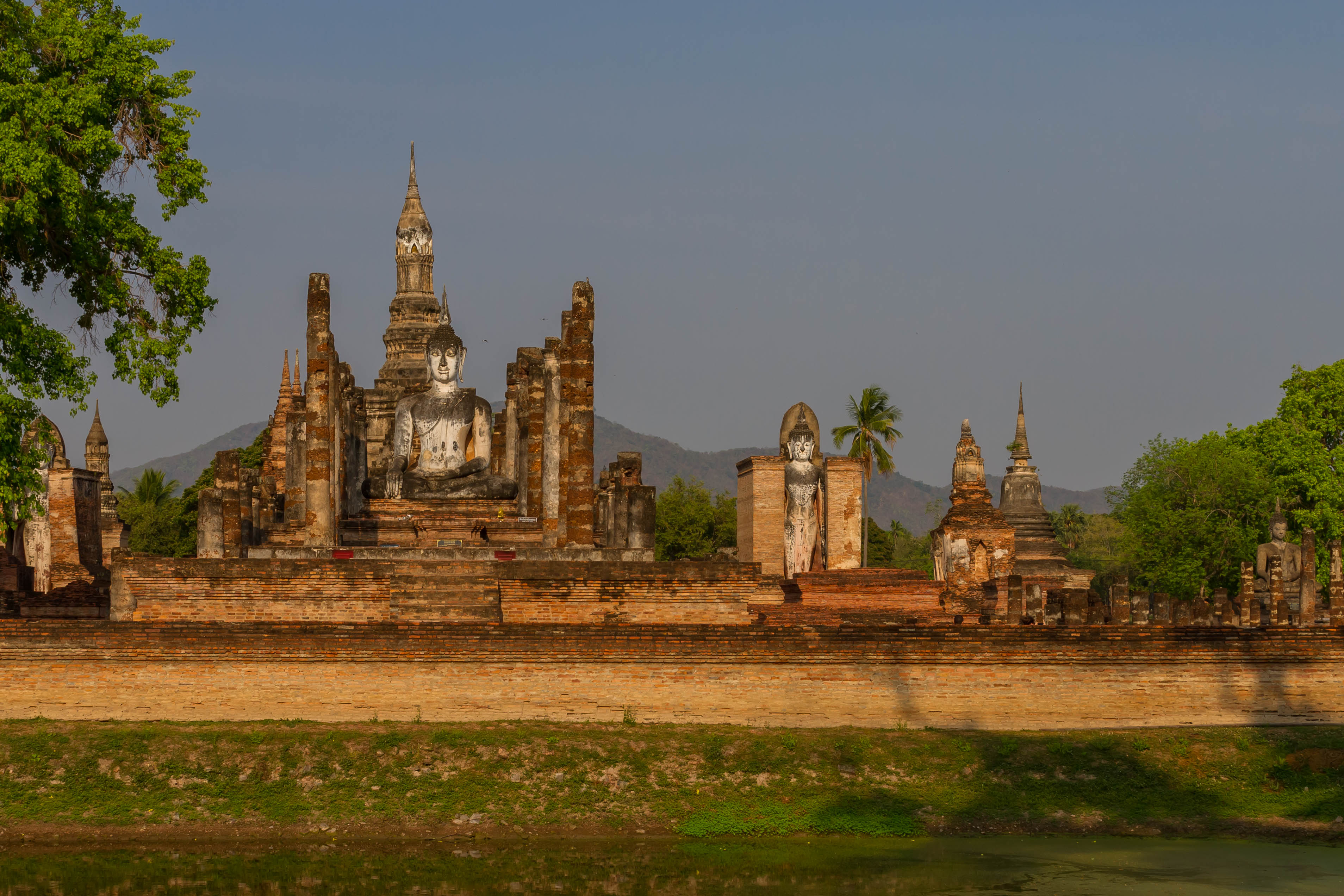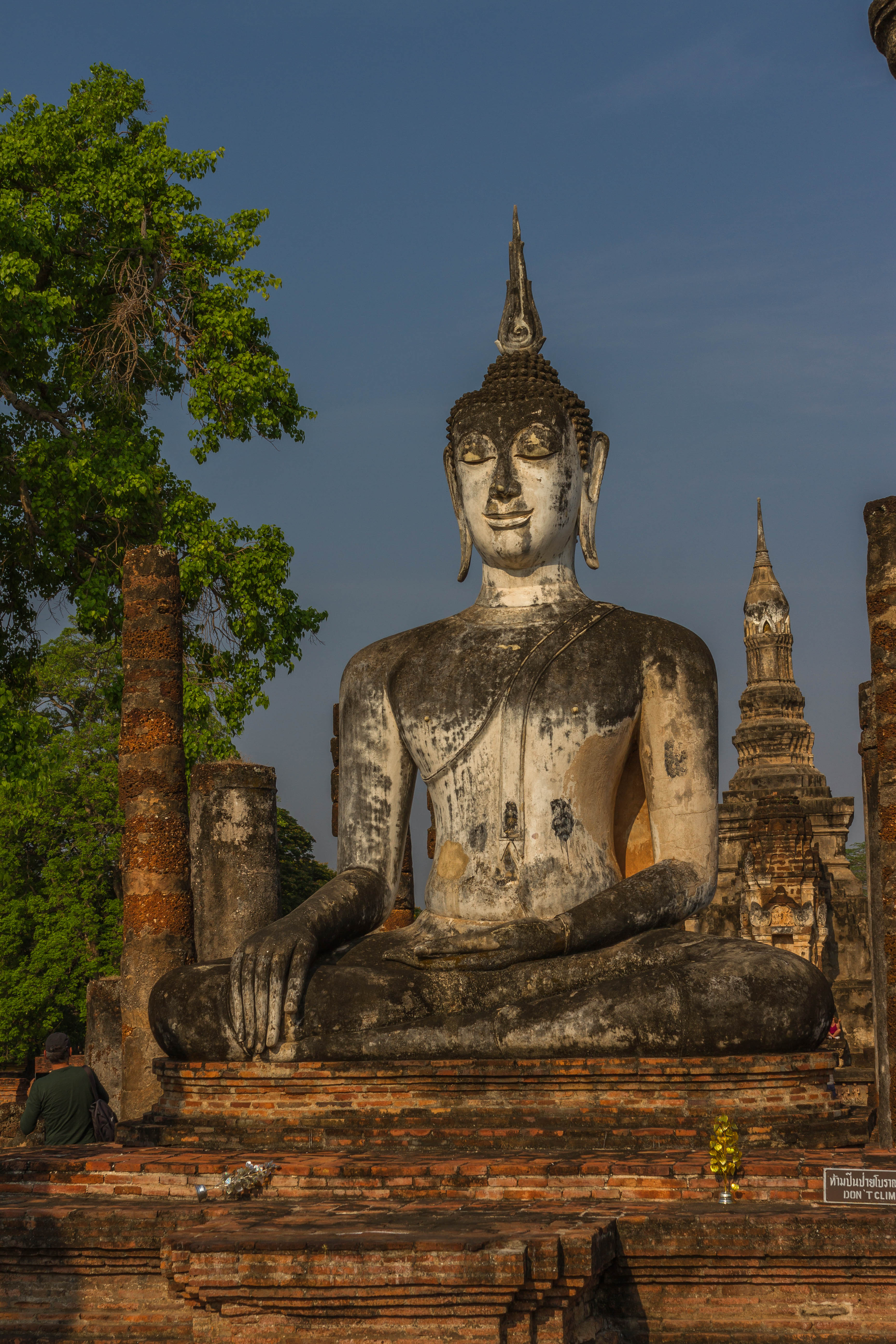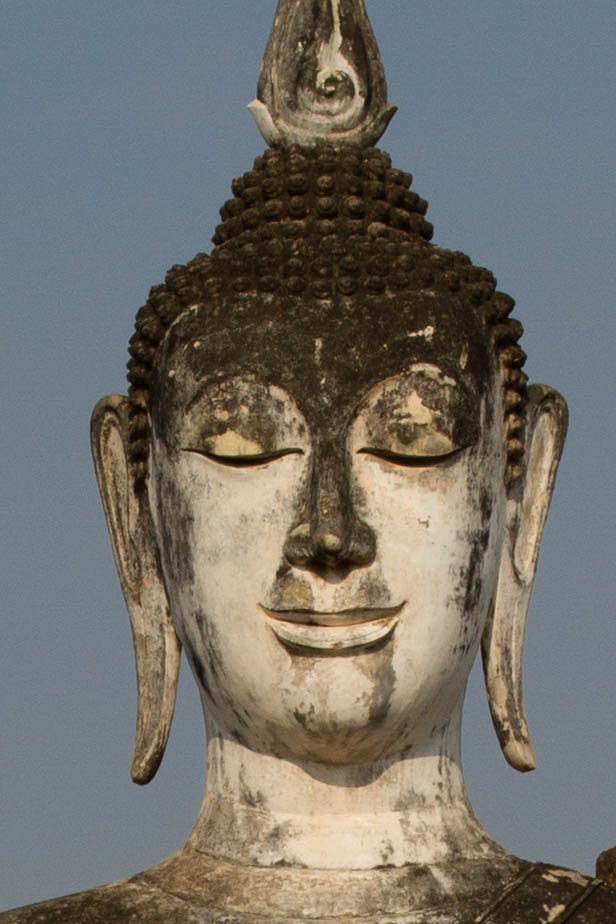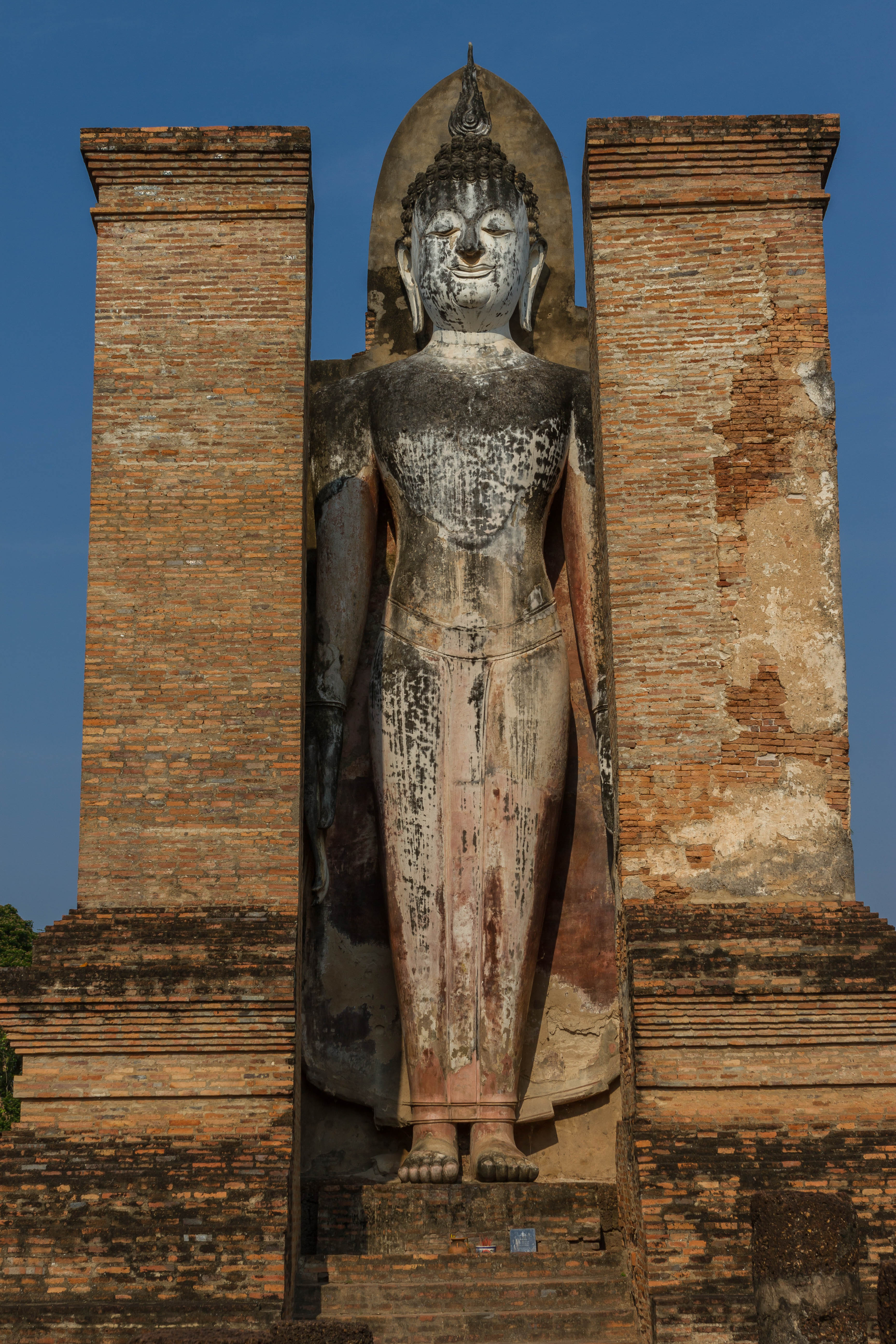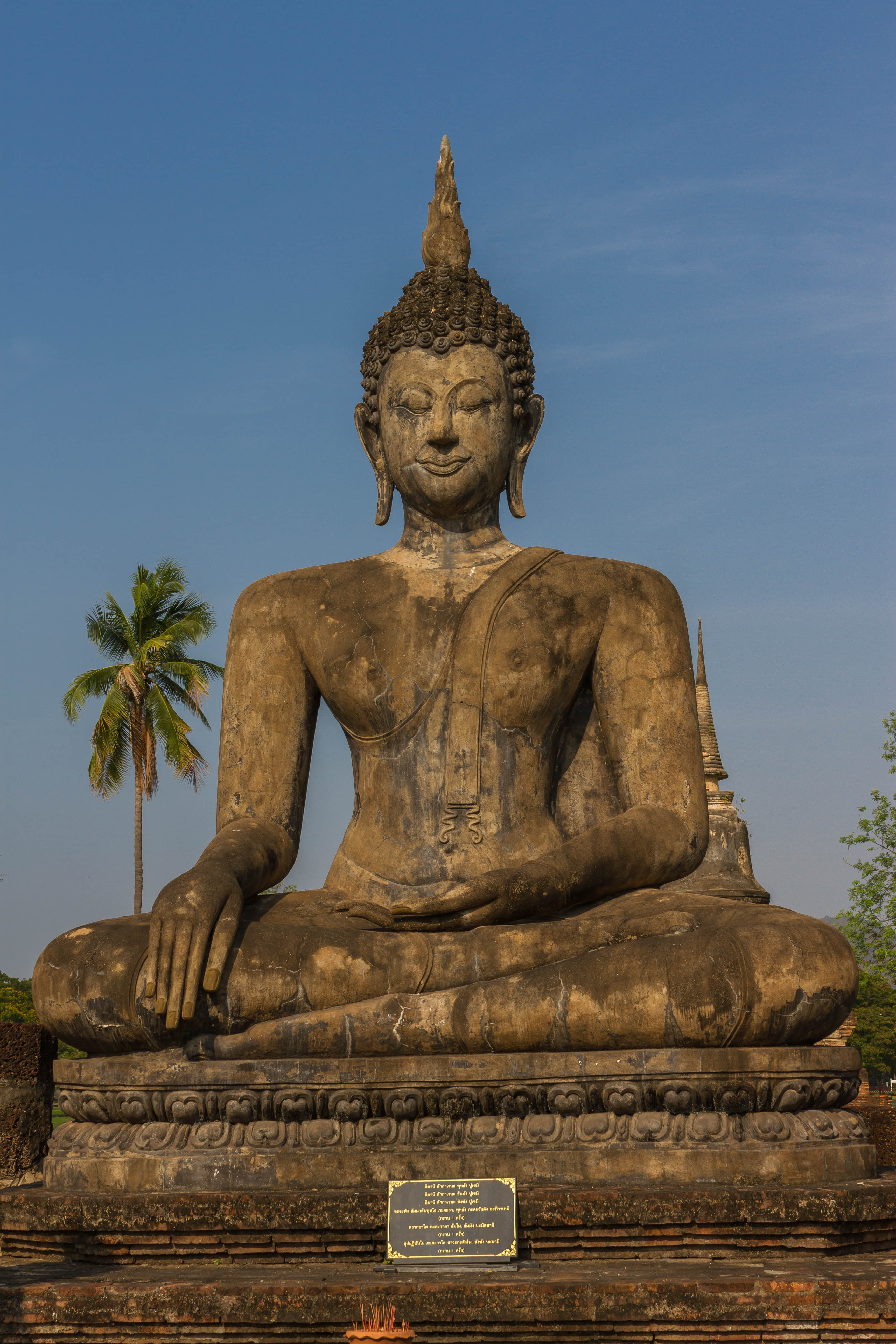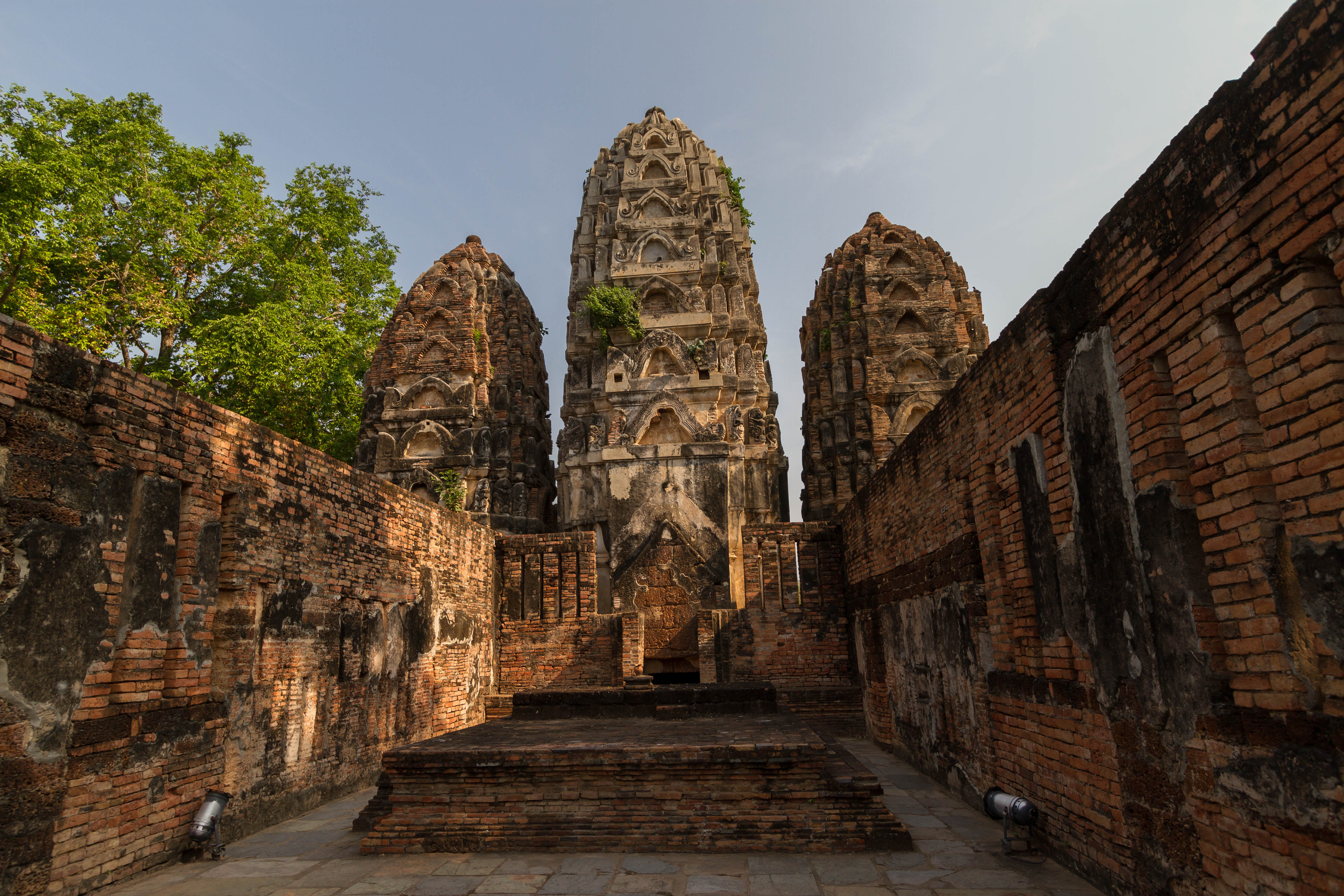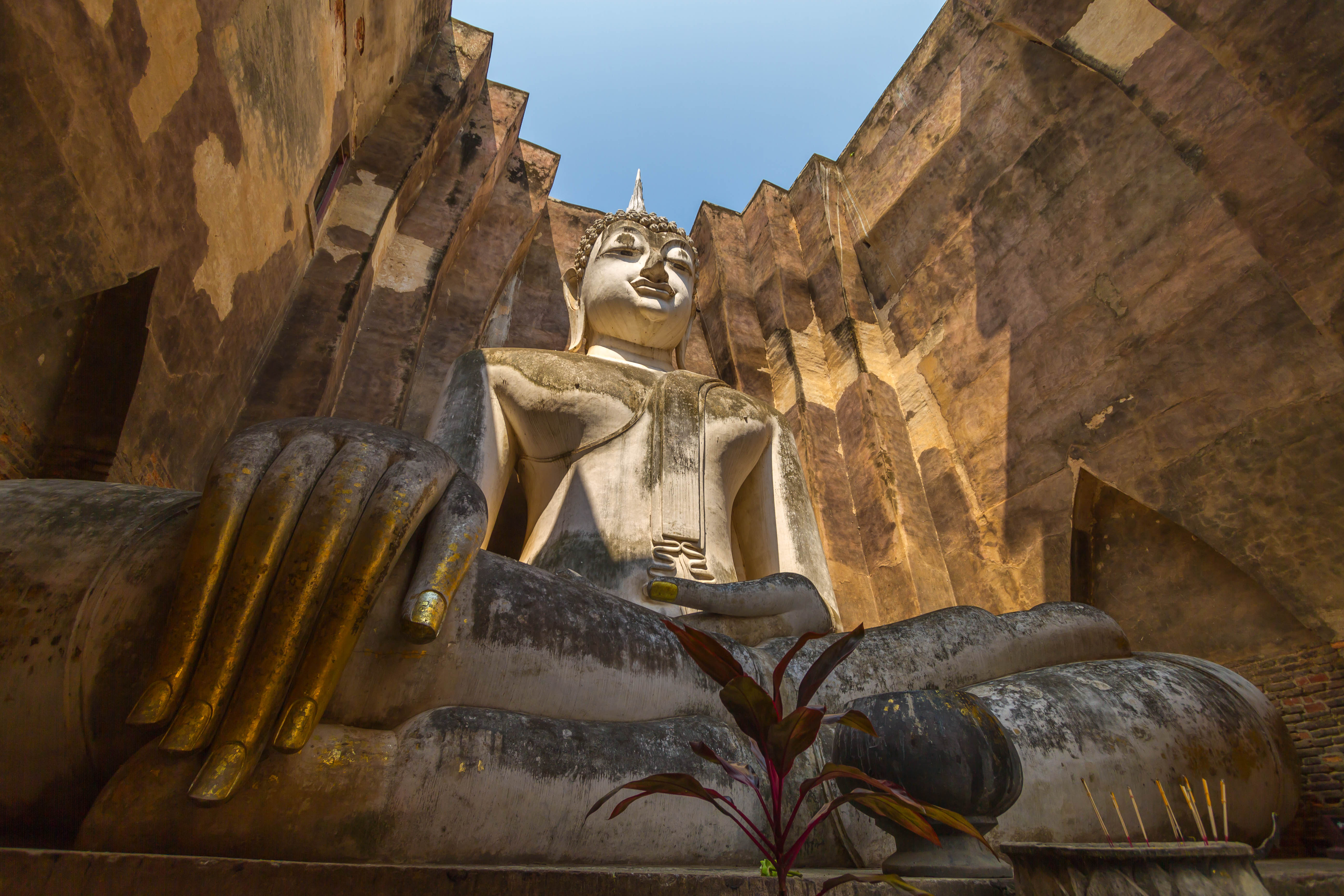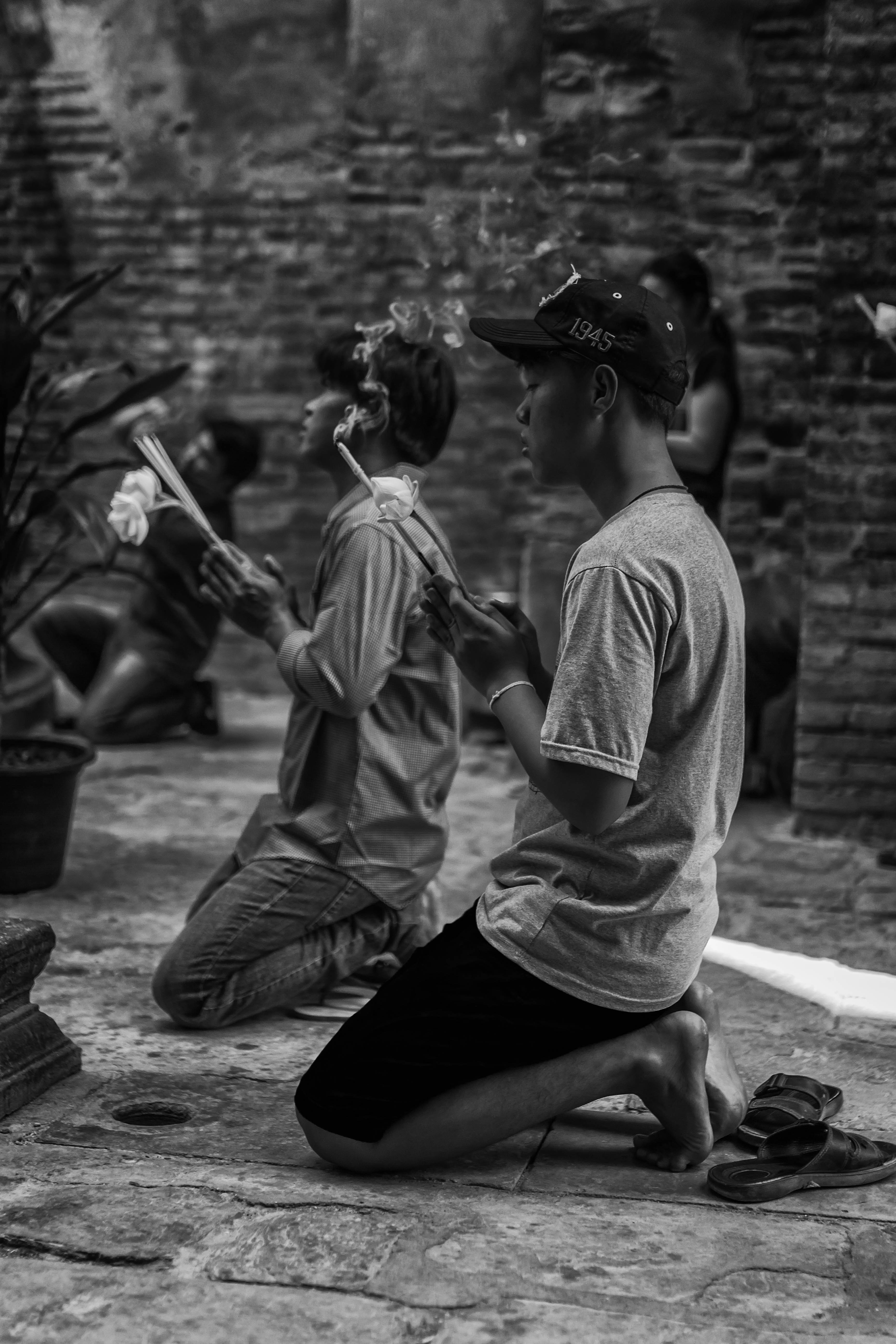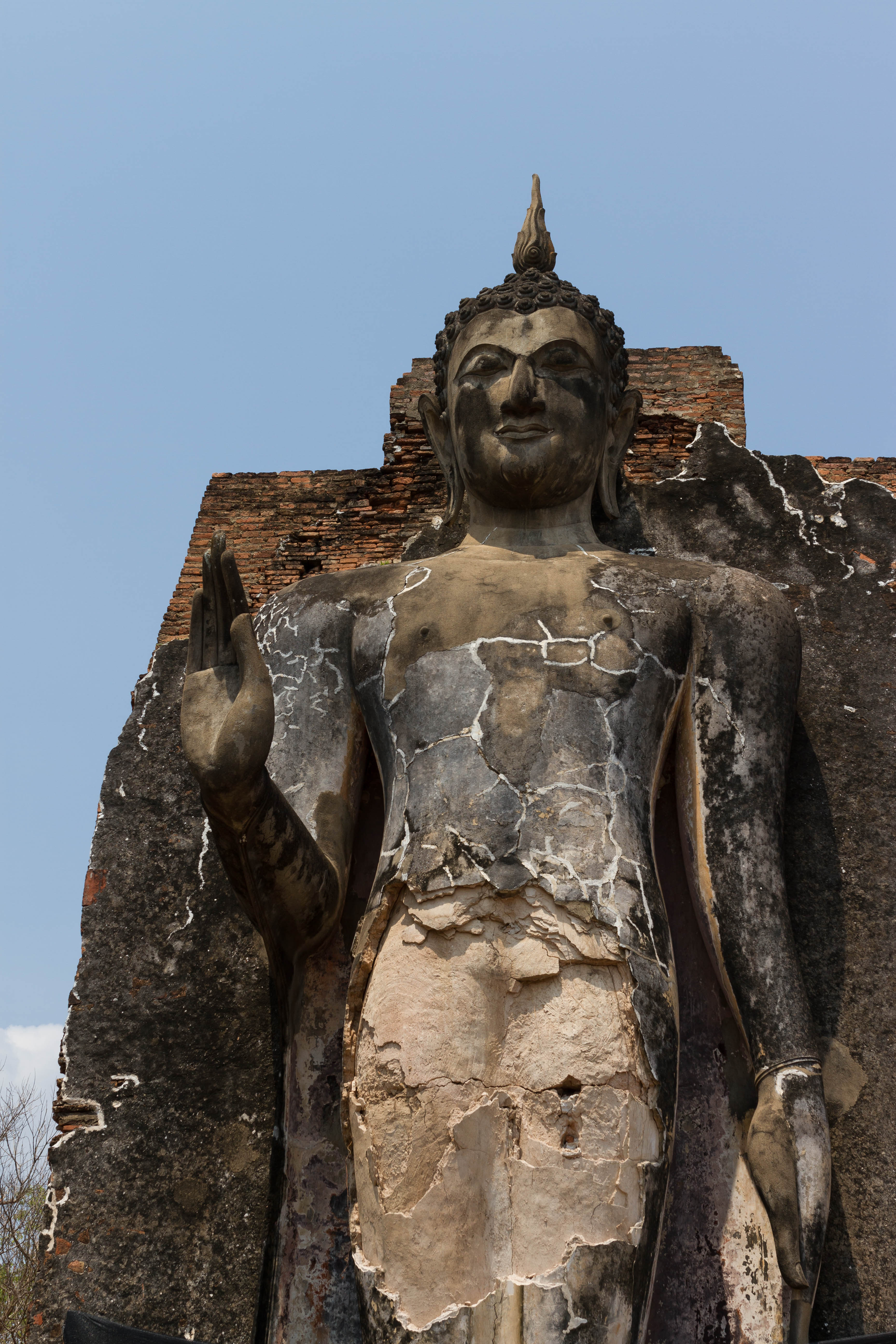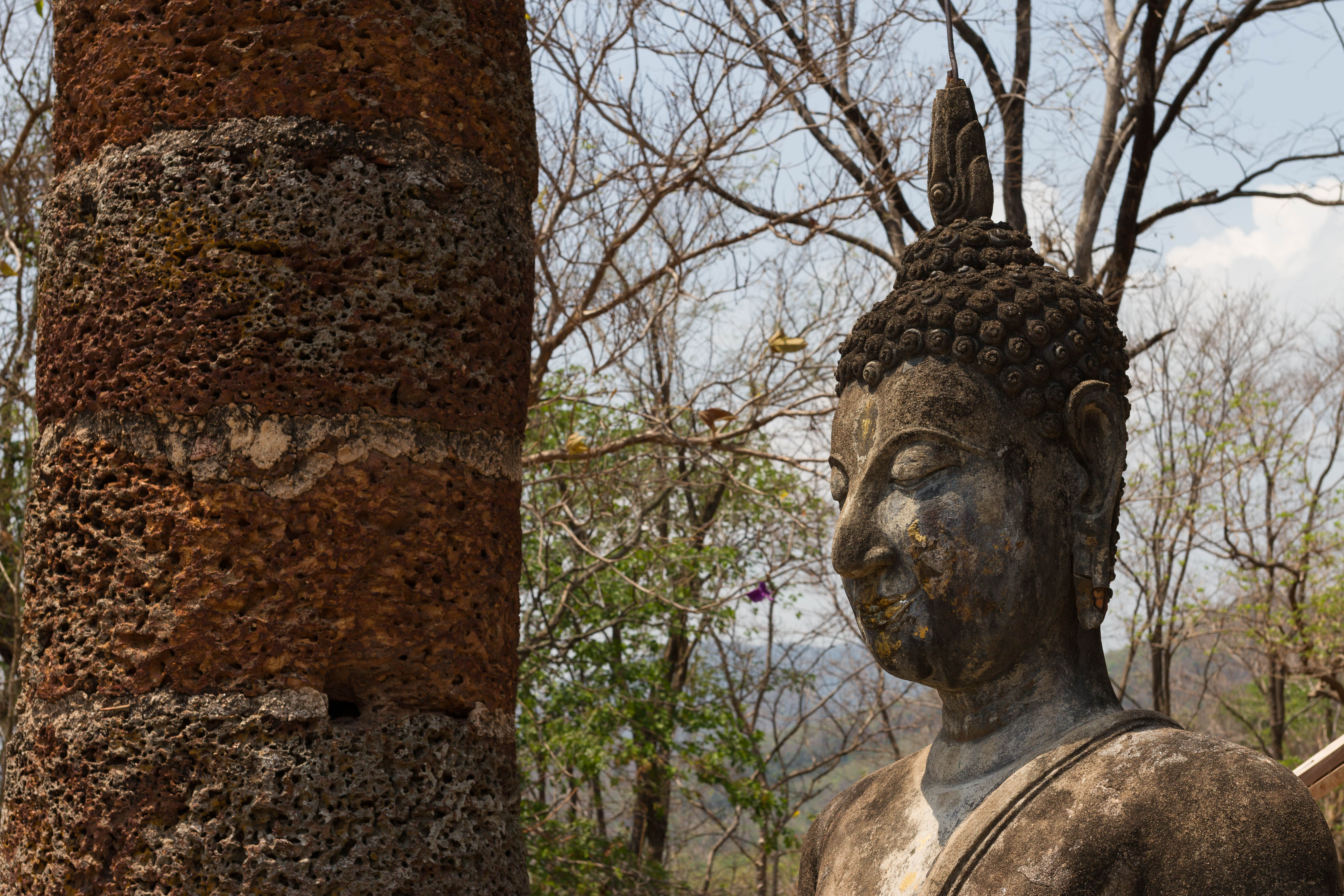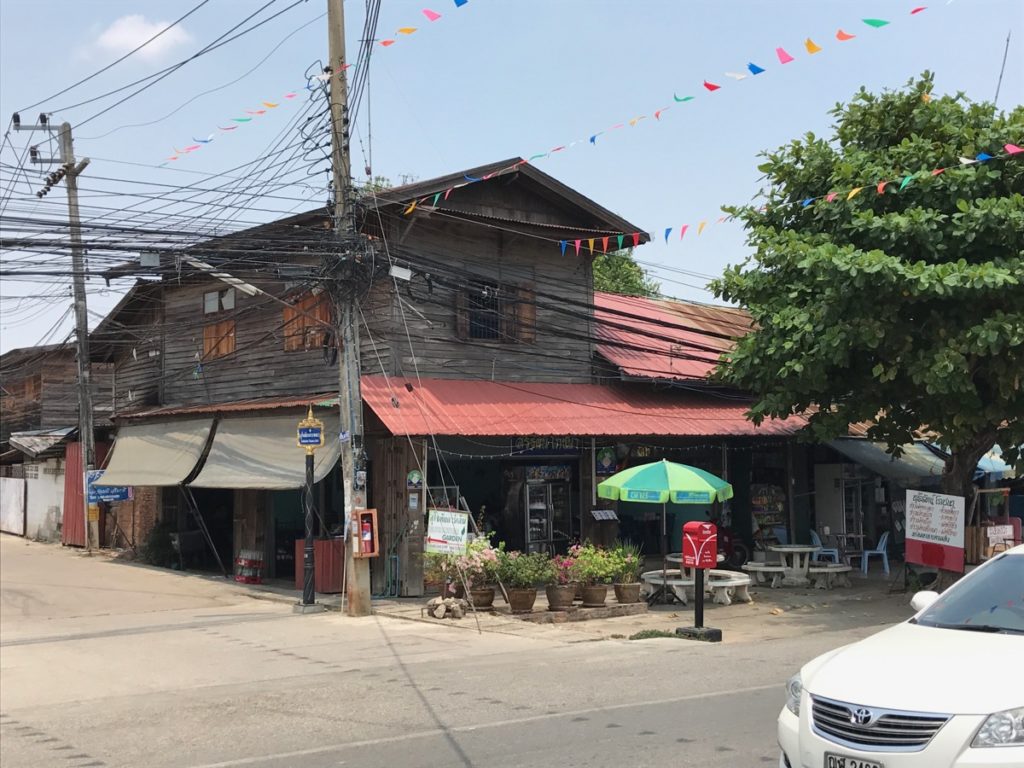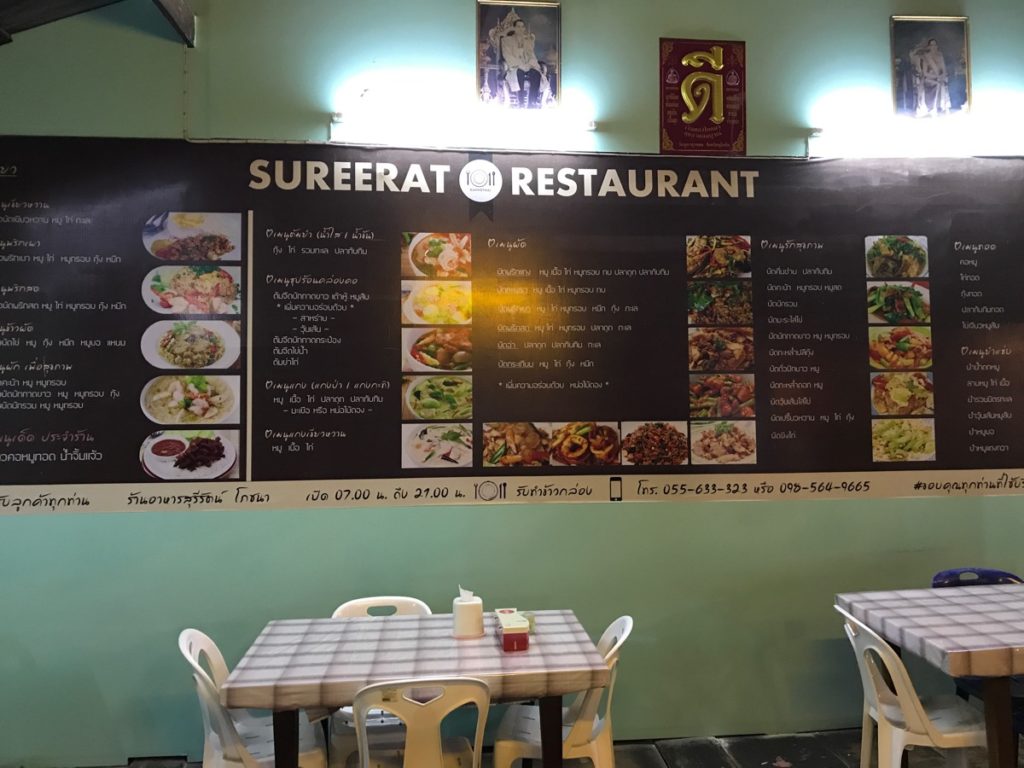Sukhothai - สุโขทัย
Sukhothai was the first capital of Siam, founded in 1238, ending the Khmer rule of Angkor Wat. Sukhothai was inscribed as a UNESCO World Heritage Site in 1991.
The site lies about 300 km south of Chiang Mai. The drive takes around 5 hours, with possible stops, notably at Lampang to visit the Wat Lampang Luang temple.
Sukhothai
Considered the cradle of the Siamese kingdom, Sukhothai is an ancient royal capital listed as a UNESCO World Heritage site. Its majestic ruins rise in a vast, peaceful archaeological park amid ponds, hills, and rice fields. Less visited than its southern counterparts, Sukhothai charms with its serenity, rich history, and subtle beauty.
The First Capital of Siam
Founded in the 13th century, Sukhothai was the capital of the first independent Thai kingdom, under the reign of Rama Khamhaeng, credited with creating the Thai alphabet.
This era marks the beginning of a unique artistic style visible in architecture, slender Buddha statues, and the harmonious layout of temples.
The Sukhothai Historical Park
The site is divided into several zones (central, north, west, etc.), all accessible by bike:
- Wat Mahathat: the central, vast temple surrounded by ponds, symbol of the site.
- Wat Si Chum: famous for its immense seated Buddha hidden in a narrow hall.
- Wat Sa Si: charming temple on an island, very photogenic at sunset.
- Wat Saphan Hin: temple perched on a western hill with views over the plain.
The site is well-preserved, allowing a smooth visit without large tourist crowds.
A Contemplative Experience
What strikes at Sukhothai is the silence. The site is often explored alone, by bike, at dawn or late afternoon. Far from the bustle of Bangkok or Ayutthaya, Sukhothai invites meditation and slow admiration.
Access and Stay
- New Sukhothai town: accommodations, restaurants, and bus station.
- Easy access by bus from Chiang Mai, Phitsanulok, or Bangkok.
- Possibility to combine with a visit to Si Satchanalai, another nearby historic site.
Conclusion
Sukhothai is a return to Siam’s origins in a peaceful and majestic setting. An ideal site for history lovers, religious art enthusiasts, and those seeking quiet, crowd-free journeys. A discreet gem not to be missed.
Wat Mahathat – Temple of the Great Relic (วัดมหาธาตุ)
At the heart of the historical park, Wat Mahathat is Sukhothai’s largest and most important temple. It stands out with its lotus-bud shaped chedis, collapsed columns, and Buddha statues typical of the classical style. The complex illustrates the peak of the kingdom’s religious art in the 13th century.
Wat Si Sawaï – Former Brahmanic Sanctuary (วัดศรีสวาย)
Before becoming a Buddhist temple, Wat Si Sawaï was a sanctuary dedicated to Vishnu, as evidenced by its three Khmer prangs. It is one of Sukhothai’s oldest monuments.
Wat Sa Si – The Temple of the Sacred Pond (วัดสระศรี)
Located on an island in the middle of a pond, Wat Sa Si offers one of the park’s most beautiful views. The elegant walking Buddha is surrounded by a bell-shaped stupa typical of the site.
Wat Si Chum – The Secret Buddha (วัดศรีชุม)
This temple was built at the end of the 14th century by King Mahadharmaraja II. It is famous for housing an immense seated Buddha statue, visible through a narrow opening, creating a striking effect of contemplation.
Wat Saphan Hin – The Stone Bridge Temple
Wat Saphan Hin sits perched on a hill to the west of the old city. Access is via a laterite-paved path. The standing Buddha dominates the Sukhothai plain, in a majestic posture facing the horizon.
The Sureerat Restaurant – A Local Spot
A true typical Thai restaurant, with warm welcome and excellent food. Of course, there are also more “touristy” restaurants with air conditioning, etc., but we prefer the authentic!
